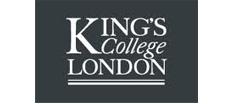Cells and organ systems
The list provides a range of activities, lesson ideas, background information, practical tips and suggested teaching strategies for looking at cells, tissues and organ systems at KS3.
The resources in this list support lesson planning for the following areas of the curriculum:
• cells as the fundamental unit of living organisms, including how to observe, interpret and record cell structure using a light microscope
• the functions of the cell wall, cell membrane, cytoplasm, nucleus, vacuole, mitochondria and chloroplasts
• the similarities and differences between plant and animal cells
• the role of diffusion in the movement of materials in and between cells
• the structural adaptations of some unicellular organisms
• the hierarchical organisation of multicellular organisms: from cells to tissues to organs to systems to organisms.
Visit the secondary science webpage to access all lists: https://www.stem.org.uk/secondary-science
Whilst this list provides a source of information and ideas for experimental work, it is important to note that recommendations can date very quickly. Do NOT follow suggestions which conflict with current advice from CLEAPSS, SSERC or recent safety guides. eLibrary users are responsible for ensuring that any activity, including practical work, which they carry out is consistent with current regulations related to Health and Safety and that they carry an appropriate risk assessment. Further information is provided in our Health and Safety guidance.
- ALL
- Teacher guidance
- Game
- Activity sheet
- External link
Teacher guidance
IDEAS Resources
The cards in activity 5 (page 20) of this resource can be used to extend students' observations of euglena by considering whether euglena are plant or animal cells.
Students evaluate their own observations and the evidence presented on the cards to support their point of view about euglena. Since some of the evidence can be ambiguous and could indicate that euglena is both an animal cell and a plant cell (e.g. it moves and it has chlorophyll), the activity provides an opportunity to generate cognitive conflict for students.
Parts of a cell - R2P
This resource provides a lesson plan with ideas on how to use educational games, such as bingo and role play, to teach about parts of the cell and their function. A research summary discusses how pupils find it challenging to identify and describe the functions of the internal components of a cell. It also suggests that the use of games that challenge pupils' knowledge and provide a navigation through the cell to different cell organelles improves pupils' understanding of cell parts and functions.
By the end of the lesson pupils should be able to draw and label an accurate diagram of a cell and its parts, and describe the function of each cell part.
Game
Bingo Games
This game is a great way to recap and reinforce vocabulary and meanings within the topic. There ae 50 individual bingo cards which can be laminated and reused.
Activity sheet
Using Models
This resource provides ideas for developing a sequence of 'good enough' cell models to explore how cells can form tissues and organs.
Modelling a simple animal and plant cell can be done as a demonstration intitially, discussing what each part of the model represents and relating it to what can be seen under the microscope so that when students view their own slides of cells they are better prepared to understand what they are looking at. You can project the view of a cell under a microscope onto a whiteboard using a webcam.
Students can then create their own models of simple and specialised cells. When modelling cells, discussing the strengths and weaknesses of the model can draw out misconceptions. For example, having viewed cells as images or under a microscope, students can easily believe that they are two-dimensional.
Carefully planned group work with explicit aims can encourage students to relate structure to function, extending the activity to allow connections to be made between between the practical work and scientific ideas.
External link
Observing Starch Grains in Banana Cells
Banana cells are useful for observing starch grains, which are visible when the cells are stained with Lugol. This practical can be used to introduce staining as a technique in slide preparation, and students can look at the cells with and without staining and compare the difference.
A World in a Hanging Drop
The hanging drop technique is a well-established method for examining living, often unicellular organisms without the need for staining. This is a slightly updated procedure using apparatus which is cheaper, more robust and less fiddly.
There are other methods of observing euglena depending on the equipment you have, such as using deep well slides as described below.
The effect of size on uptake by diffusion
This practical uses cubes of agar jelly to see how far liquid penetrates them by diffusion over five minutes. Students can calculate the surface area to volume ratio for cubes of different sizes and consider the problems faced by large organisms, introducing the idea that organ systems are needed to transport oxygen and nutrients to cells deep in the body.
Chicken Leg Dissection
This practical allows students to observe a number of tissue types, including muscle, connective tissue, adipose and bone. It could be carried out as a demonstration, but given that chicken legs are relatively cheap and easily available, students can work in pairs to dissect one.
The idea of cells forming tissues can be demonstrated before the practical using cells made in plastic bags and laid on top of each other in a glass trough.
Learning would be strengthened through the provision of a clear set of instructions with step by step photographs and prompts so that students know what they are looking for. Questions could be included to guide observations and support discussion as the students work in pairs to examine the leg.
As with all practical work involving food products you should be aware of cultural sensitivities.





